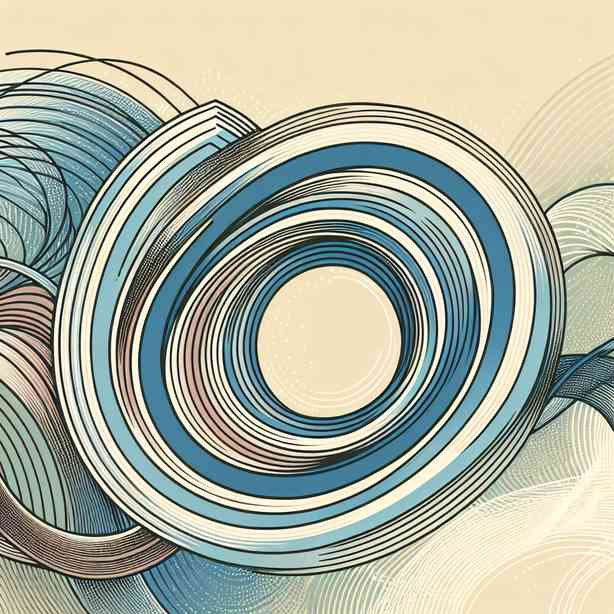
The Art of the Perfect Loop
Creating the perfect loop is much more than a technical endeavor; it is an intricate dance of creativity and precision. Whether you’re a musician, a visual artist, a filmmaker, or a programmer, crafting loops can significantly enhance your work, providing a seamless experience that resonates with your audience. This exploration into the art of looping invites you to discover various aspects, techniques, and considerations that can elevate your loops from simple repetitions to captivating and immersive experiences.
When we talk about loops in music, we often think of repetitive motifs that create a hypnotic effect. A well-crafted music loop can evoke emotions, build tension, and transform atmospheric sounds into memorable pieces. To create an effective music loop, one must pay attention to several key elements: rhythm, harmony, melody, and texture. The interplay of these components determines the loop’s impact. For instance, a well-defined rhythm can anchor a loop, making it instantly recognizable, while harmony can add depth and richness. Crafting a melody that is catchy yet adaptable ensures that the loop retains freshness, even after repeated listens.
In visual arts, the concept of a loop takes on a different dimension. Video art is one area where loops shine, allowing artists to create mesmerizing visual sequences that engage and challenge viewers. Artists can manipulate time and perception by repeating video segments, accentuating movement, color transitions, or thematic elements. Crafting a visual loop requires a keen understanding of timing and pacing. The length of the loop, the arrangement of visual elements, and the color palette all contribute to the viewer’s experience. When done right, a visual loop becomes a self-contained narrative that invites viewers to interpret it from multiple angles, drawing them back for another look.
In digital art and animation, loops can be utilized to create seamless transitions and engaging user experiences. Interactive media designers often incorporate loops to make interfaces more dynamic and responsive. For example, a well-animated button that pulses gently draws the user’s attention and encourages interaction. The art lies in the subtlety of the movement; exaggerated animations can distract, while smooth, cohesive designs enhance usability without overwhelming the viewer. The perfect loop in this context fosters a connection between the user and the experience, making every interaction feel intuitive and effortless.
In filmmaking, looping can be a powerful storytelling tool. Filmmakers can use loops to create tension, establish rhythm, or reinforce themes. Repeating visual motifs or dialogue can underscore key moments, making them more poignant. Sometimes, filmmakers deliberately employ loops to challenge viewers’ perceptions of time and continuity, encouraging deeper reflection on the narrative. Crafting an effective loop in film often involves collaborating with various departments, such as cinematography, sound design, and editing, to ensure that the loop serves the story’s broader aims. The successful integration of these elements results in a film that captivates and leaves a lasting impression.
The technical aspects of creating perfect loops cannot be overlooked. In music production, software tools play a crucial role in designing seamless loops. Understanding features like quantization, snapping, and tempo adjustments can help achieve a perfect alignment, ensuring that the audio loops without noticeable glitches or breaks. Developers and artists working with software like Ableton Live or Logic Pro have access to a variety of tools that facilitate the creation of complex loops, from individual audio samples to MIDI patterns. It’s essential to master these tools to bring your looping ideas to fruition effectively.
Sound design is another important consideration in creating loops. The choice of sounds, samples, and effects can significantly influence the quality and character of a loop. Layering different sounds can create rich textures, while selective use of effects like reverb, delay, or distortion can enhance depth and richness. Experimentation is key here; sometimes, the best loops arise from unexpected combinations or manipulated sounds that challenge conventional musical boundaries.
Moreover, context matters when it comes to loops. One must consider the environment in which the loop will exist. For instance, a music loop meant for a yoga class will differ significantly from one designed for a nightclub setting. Similarly, a visual loop intended for an art installation should be crafted differently than one for a social media platform. Understanding your audience and the specific application of your loop can guide decisions about style, pacing, and complexity.
In interactive projects, user feedback becomes pivotal in refining your looping techniques. Iteration is a fundamental part of the design process, whether it’s testing musical loops with focus groups or observing how users interact with animated elements. Embracing feedback allows you to make informed adjustments, eventually leading to a finished product that resonates more deeply with users.
This journey into the art of the perfect loop would not be complete without acknowledging that loops are more than just mechanics—they are a medium for expression. Loops can evoke nostalgia, provoke thought, or create a sense of belonging. Moreover, engaging loop-based structures can enhance learning and retention in educational settings, making content more accessible and enjoyable for students. Ultimately, the perfect loop transcends its function; it becomes a canvas for creativity and innovation.
In conclusion, crafting the perfect loop is a multifaceted process that weaves together creativity, technical skill, contextual awareness, and a deep understanding of the audience. Whether you’re working in music, visual arts, digital media, or film, the principles of looping remain consistent. Embrace experimentation, remain open to feedback, and continuously refine your techniques. By doing so, your loops will not only serve their intended purpose but also resonate profoundly with those who experience them, enriching their interaction in ways you may never have imagined. Through mastering the art of the perfect loop, you open the door to endless possibilities, elevating your work and captivating your audience in memorable ways.


